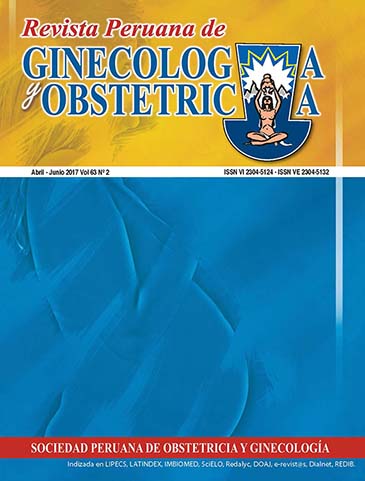Transcervical Foley catheter– endovenous oxytocin or oxytocin alone for induction of labor in term pregnancies
DOI:
https://doi.org/10.31403/rpgo.v63i1985Abstract
Objective: To compare the effectiveness of transcervical Foley catheter – oxytocin with oxytocin alone for labor induction in term pregnancies. Design: Case-control study. Setting: Hospital Central “Dr. Urquinaona”, Maracaibo, Venezuela. Participants: Pregnant women undergoing cervical ripening and labor induction were randomly assigned to be treated with transcervical Foley catheter – oxytocin (group A) or oxytocin alone (group B). Main outcome measures: General characteristics, interval between beginning of induction and delivery, vaginal birth rate, maternal complications, perinatal variables, and adverse effects were evaluated. Results: There were no significant differences between groups in general characteristics (p = ns). Patients of group A showed a shorter interval between the beginning of induction and delivery compared with patients in group B (p < 0.05). There was no significant difference in vaginal birth rate between groups (p = ns). Newborns of both groups had similar mean values of Apgar scores at 1 minute and 5 minutes (p = ns). The most common adverse effect in both groups was nausea, but there were no significant differences between groups in frequency of adverse effects (p = ns). Conclusions: Use of transcervical Foley catheter – oxytocin shortened the interval between beginning of induction and delivery compared with oxytocin alone, with similar incidence of maternal and perinatal adverse effects.Downloads
Download data is not yet available.
Downloads
Published
2017-07-11
How to Cite
Fuenmayor-Beltrán, M., Reyna-Villasmil, E., Santos-Bolívar, J., Mejía-Montilla, J., Reyna-Villasmil, N., & Fernández-Ramírez, A. (2017). Transcervical Foley catheter– endovenous oxytocin or oxytocin alone for induction of labor in term pregnancies. The Peruvian Journal of Gynecology and Obstetrics, 63(2), 191–197. https://doi.org/10.31403/rpgo.v63i1985
Issue
Section
Artículos Originales
















